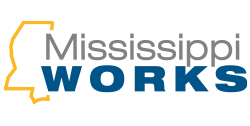How to Write a Resume that Works
Writing a resume is a necessary thing in the job search process, but it is definitely intimidating to many people. Here are some tips to help you as you prepare your resume.
Remember the purpose of your resume. A resume is not intended to get you a job. Very few people are hired from their resume alone. The real purpose is to get you an interview. Also, remember that you have to sell yourself at the interview--the largest part of the hiring decision is based on personality.
Keeping the purpose of the resume in mind, some of the top tips on resume writing are:
Keep it simple.
A resume needs to tell the potential employer only a few things:
- Who you are (Name, contact info, etc)
- What you can do (skills/experience/responsibilities)
- Prove it (achievements / contributions – quantified whenever possible)
A fancy design is not required.
Use a traditional font like Times New Roman, 9 to 12 point size, and black type on white paper. You could use a different type size for your name companies for whom you have worked and your title, but avoid lots of italics, bold face type and underlining. Try to keep it to no more than two pages in length.
Write it in a simple Word document that is easy to view on all computers.
Avoid templates or tables.
List your work experience in reverse chronological order.
List the most recent job first, and work backwards. Include the name of the company, what they do, how long you were there, the position you held and your accomplishments. Potential employers are interested in accomplishments rather than responsibilities.
Don’t include your objectives and a summary.
Employers only care about their objectives, not yours.
Leave out the personal information.
For example, an employer may think that if you are married with three children, you would be unable to travel. It might keep you from getting the interview.
Numbers, percentages and statistics sell.
Avoid the fluff and give specifics about about what you did in your previous jobs.
Use specific words and phrases to describe your skills.
Rather than saying you are customer-oriented and creative, tell the potential employer that you are in customer service, a manager, accountant, etc.
Adding a Keyword Section.
With the advent of Internet-based, searchable resume databases and resume scanning software, the keyword section is becoming more and more prevalent on resumes. A keyword section is a separate section in a resume where a person would list certain keywords that a recruiter or employer would be using to search a resume database. You can find many of the important keywords to use in the job description for which you are applying. Your keyword section should be near the end of your resume, after your career history and education credentials.
Proofread, proofread and proofread again.
A resume with incorrect spelling, poor grammar, or a typo in it is often discarded into the trash despite the fact that you are the perfect candidate for the job. Even if you are a good proofreader, it’s advisable to let someone else proofread your resume, too.
No matter how great your resume may be, unless it helps you get interviews with the person doing the hiring, it is not successful. Getting interviews is hard work that requires tenacity, persistence, determination and courage. No one likes to face possible rejection, but you have to be prepared for that in order to find a job.








